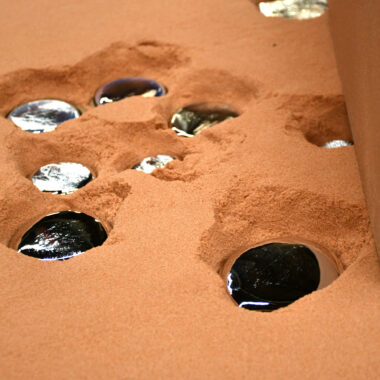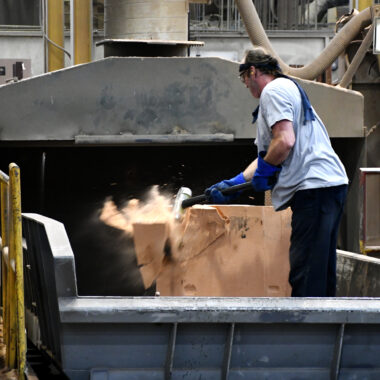Reinvent Your Production with Aluminum Casting Innovations
Reinvent Your Production with Aluminum Casting Innovations
Blog Article
Study the Globe of Aluminum Spreading: Recognizing the Different Methods
Light weight aluminum casting is a basic procedure in the manufacturing market, with numerous techniques used to create complex and precise components. From the standard sand spreading method to the sophisticated die spreading procedure, each method provides one-of-a-kind advantages depending on the requirements of the job.
Sand Spreading Method
Sand casting, a widely-used technique in light weight aluminum spreading processes, involves producing mold and mildews constructed from compressed sand for pouring molten metal. This technique is affordable and extremely functional, making it a prominent choice for various industries. The process starts with the production of a pattern, generally made from wood or metal, which is after that pushed into the sand to leave a perception. The sand combination, typically silica sand mixed with a binder like clay, is tightly packed around the pattern to form a mold cavity. Once the mold is ready, it is securely positioned in a flask and molten light weight aluminum is put right into the dental caries.
After the steel has actually cooled and solidified, the sand mold and mildew is damaged away to reveal the light weight aluminum spreading. Sand casting enables the production of intricate forms and large components that might be expensive or hard to create utilizing other approaches. It is likewise a sustainable strategy as the sand can be recycled and used numerous times, minimizing waste in the casting procedure.
Long-term Mold Strategy

One substantial benefit of the Irreversible Mold And Mildew Strategy is the boosted dimensional precision it uses. The steel mold enables tighter tolerances and finer details in the last light weight aluminum spreadings compared to sand casting methods. This accuracy makes it a recommended selection for applications where limited dimensional control is important, such as in the vehicle and aerospace markets.

Pass Away Casting Refine

Investment Casting Approach
Utilizing an accuracy spreading method, Investment Casting Strategy involves creating intricate light weight aluminum elements by pouring liquified metal right into a ceramic mold. This process, additionally understood as lost-wax spreading, begins with the creation of a wax pattern of the desired part (aluminum casting).
The following step entails pouring the liquified light weight aluminum into the ceramic mold and mildew. The aluminum loads the tooth cavity left by the wax pattern, taking its shape exactly. This technique is favored for its capacity to produce intricate shapes with high precision and a smooth surface coating. Financial investment casting is generally utilized for making elements in sectors where tight tolerances and detailed designs are called for, such as aerospace, automobile, and clinical equipment. The adaptability and precision of the Financial investment Casting Technique make it an important strategy worldwide of aluminum spreading.
Lost Foam Casting Method
Having checked out the elaborate accuracy of Financial investment Casting Strategy, the emphasis currently changes to the innovative Web Site technique of Lost Foam Casting in aluminum element production. Lost Foam Spreading, likewise known as evaporative pattern casting, is a contemporary method where a foam pattern of the preferred part is produced and afterwards covered with a refractory product. The layered foam pattern is after that buried in sand, and molten aluminum is poured into the mold. As the metal fills the mold and mildew, the foam vaporizes as a result of the warmth, leaving a tidy tooth cavity in the shape of the preferred component.
Among the primary advantages of Lost Foam Spreading is its capacity to generate intricate shapes with intricate information, often in a solitary piece without the need for added machining. This method is also recognized for its high dimensional accuracy and smooth surface finish. Additionally, Lost Foam Casting is a cost-efficient read here procedure as it minimizes the need for cores and enables the manufacturing of lightweight elements. Despite its benefits, Lost Foam Casting calls for cautious control of the spreading process to make sure and avoid issues high quality parts.
Verdict
In conclusion, light weight aluminum spreading offers a range of approaches such as sand spreading, long-term mold and mildew strategy, die casting, financial investment spreading, and shed foam casting. Each method has its own benefits and applications, making light weight aluminum casting a versatile and widely utilized procedure in numerous sectors. Understanding the differences between these techniques is critical in selecting the most suitable casting method for certain manufacturing needs.
Sand spreading, a widely-used approach in light weight aluminum casting processes, involves producing molds made of compacted sand for pouring molten metal. aluminum casting.The Long-term Mold Method, visit this site like sand spreading, is one more common technique utilized in aluminum casting processes, offering distinct benefits in terms of mold and mildew reusability and dimensional precision. The steel mold enables for tighter tolerances and finer information in the last light weight aluminum spreadings compared to sand casting methods. The 2 major kinds of die spreading are chilly chamber die casting and warm chamber pass away casting, each suitable for different kinds of light weight aluminum alloys.In final thought, aluminum casting supplies a selection of techniques such as sand spreading, irreversible mold and mildew method, die casting, financial investment spreading, and lost foam casting
Report this page